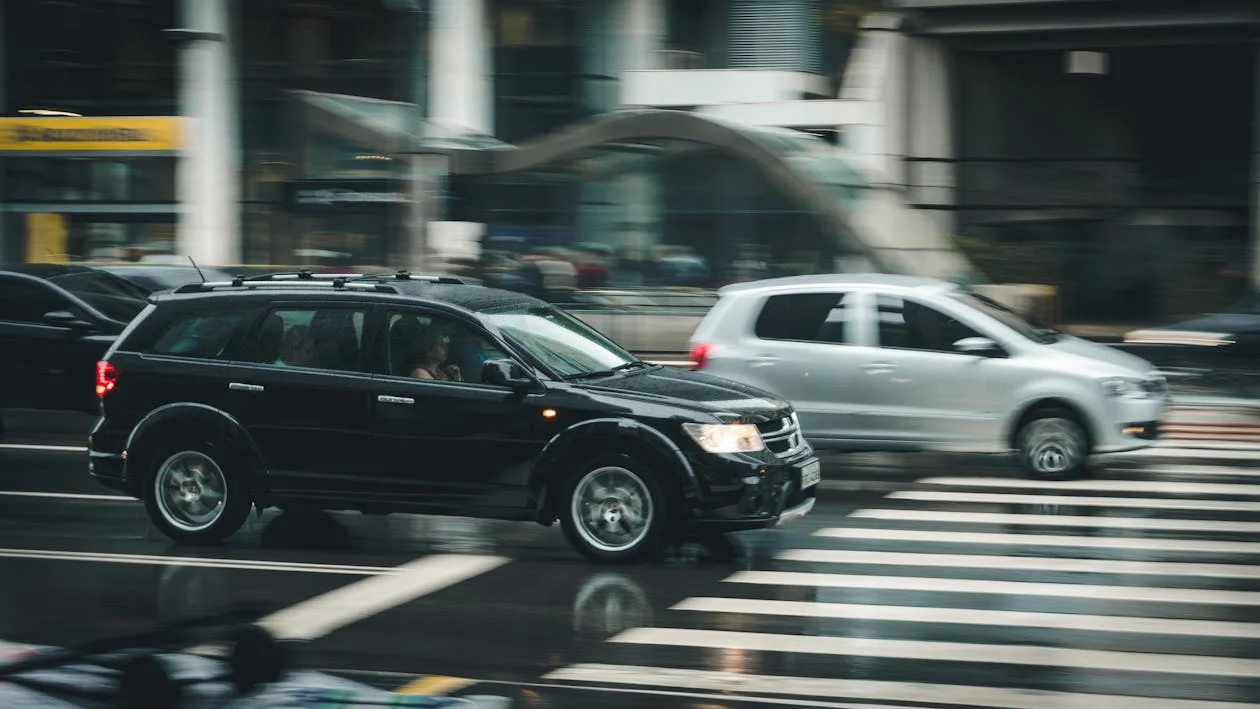The jarring impact of a hit-and-run accident leaves victims reeling. Imagine the scene: the screech of metal, the jolt of a collision, and the driver vanishes.
Victims are left not only with physical injuries but also a slew of unanswered questions. Who was at the wheel? Why did they leave? What should I do next?
A rising tide of hit-and-run crashes compounds these uncertainties. A recent report by the Colorado State Patrol revealed a troubling 22% increase in such incidents statewide. This highlights the growing concern surrounding this dangerous behavior.
Handling a hit-and-run requires a calm and composed approach beyond the initial shock. In this article, we’ll discuss some strategies, covering actions and legal considerations, to help navigate the unsettling aftermath of a disappearing driver.
Immediate Steps to Take
TIME Magazine states that after a hit-and-run, they should immediately pull over safely, check passengers for injuries, and ensure their safety. Contact the police to report the incident; an officer will investigate and file an accident report at the scene.
Take detailed notes on the vehicle and driver, including the license plate, color, make, and any distinctive features. Capture photos of the scene, documenting damage to your vehicle and any debris. Notify local law enforcement immediately, sharing all gathered information.
Refrain from chasing the fleeing driver; instead, concentrate on preserving evidence and obtaining eyewitness statements if possible.
Contact Law Enforcement
Promptly contacting law enforcement is crucial to start an investigation and improve the chances of identifying the culprit. Provide authorities with a comprehensive account of the incident, including time, location, and details about the fleeing vehicle and driver. Have evidence ready, such as photographs and witness statements, to support their efforts.
Law enforcement will use this information to track down the driver and may review surveillance footage from nearby cameras. Filing a police report not only documents the event for insurance purposes but also aids in holding the responsible party accountable. Working closely with law enforcement is vital for effectively managing the aftermath of a hit-and-run.
Gather Witness Information
Industry leaders state that gathering witness statements promptly ensures that events are fresh in the witness’s memory and prevents influence from discussions with others. These statements are crucial for accurately recording evidence and verifying the truthfulness of their contents through the witness’s confirmation.
Approach bystanders who witnessed the incident and request their contact details along with a brief statement of what they saw. Their testimony can serve as crucial evidence to corroborate your account.
If possible, encourage witnesses to stay until law enforcement arrives or seek their permission to contact them later for a formal statement. Note nearby businesses or residences with surveillance cameras that might provide footage to help identify the fleeing driver.
Nolo emphasizes capturing a witness’s complete account of a car accident. The goal is to gather all their firsthand observations for future reference. While open-ended questions like “Can you walk me through what you saw?” can be a good starting point, be prepared to delve deeper. Ask follow-up questions and clarify any unclear details.
To paint a clear picture:
- Start by having the witness describe the accident scene. This includes details like location and surroundings.
- Don’t forget to inquire about weather conditions and how they might have impacted the situation.
- Focus on the crash itself, asking the witness to recount the events leading up to the collision and the accident itself.
Notify Your Insurance Company
Progressive states that if you’re the victim of a hit-and-run, notify your insurance company promptly to potentially cover repair costs and injuries. Coverage like collision, UMPD, UMBI, PIP, and Med Pay may apply to hit-and-run incidents, depending on your policy and state.
Provide comprehensive details, including the time, location, and description of the fleeing vehicle. Have evidence ready, such as photos of your vehicle’s damage and any witness statements you’ve collected.
Your insurer will assist you in navigating the claims process and determining coverage for hit-and-run incidents. Quick notification enables them to initiate an investigation promptly, facilitating efficient claim processing.
Seek Legal Advice
Obtaining legal advice following a hit and run, especially if the driver remains unidentified, is highly advisable. A lawyer specializing in personal injury or traffic law can offer invaluable counsel regarding your legal rights and available courses of action.
To have a better understanding of legal recourse and possible outcomes, we would take an example for further discussion and enlightenment.
Colorado Springs authorities are investigating a deadly hit-and-run accident that occurred early on April 26th. The incident shut down a stretch of Platte Avenue near Academy Boulevard. Tragically, the victim, a man riding a scooter, was killed.
Police are searching for a red Jeep SUV believed to be involved in the crash and have released an image of the vehicle. They’re urging anyone with information to contact the Colorado Springs Police Department (CSPD) at 719-444-7000.
The investigation zone covers the area between Murray and Chelton Roads. This marks the 18th traffic fatality in Colorado Springs this year, and sadly, no arrests have been made yet.
The first action post such a tragedy would be to contact a local attorney. In the case above, an auto accident attorney in Colorado Springs can help you by providing legal representation and guidance. They know Colorado’s traffic laws and insurance rules, helping clients obtain compensation for injuries, medical bills, and other damages.
These attorneys guide clients through insurance claim procedures, negotiate settlements, and are prepared to litigate in court. Whether minor fender-benders or serious collisions, these professionals ensure fair resolutions and pursue justice for their clients.
Early consultation with a lawyer also aids in gathering evidence and preparing a robust case. Pursuing justice and restitution can be a long haul through the courts. According to Springs Law Group, a personal injury lawsuit can typically range from one month to two years based on the criticality of the case.
Follow Up and Documentation
Keep meticulous records of all interactions with law enforcement, your insurance provider, and legal counsel. Save copies of reports, emails, and receipts for any vehicle repairs or medical expenses resulting from the incident. Ensure you follow up on commitments made by authorities or insurance adjusters regarding investigations or claims.
Stay vigilant in gathering any new information or witness statements that may surface over time. Comprehensive documentation aids in tracking developments and bolsters your ability to seek compensation if the responsible driver is identified.
Frequently Asked Questions
How important is it to gather witness information and evidence at the scene?
Gathering witness information and evidence at the scene is critical as it provides independent verification of the incident. It strengthens your case with insurers and law enforcement to identify the responsible party and secure compensation.
Should I report a hit-and-run to the police, even if there are no injuries?
Reporting a hit-and-run to the police is crucial regardless of injuries, as it officially documents the incident and initiates an investigation. It is crucial for filing insurance claims and possible legal proceedings.
When should I consider seeking legal advice after a hit-and-run incident?
Seeking legal advice promptly after a hit-and-run, especially if the driver is unidentified or if insurance issues arise, is advisable. A personal injury lawyer offers guidance to protect your rights and navigate potential legal challenges with insurers or in civil court.
Taking Control After a Hit-and-Run
After a hit-and-run with a disappearing driver, taking prompt and systematic action becomes crucial. Prioritizing safety, documenting every aspect, and promptly seeking legal and insurance assistance are vital steps in managing this complex scenario.
Reporting the incident to law enforcement, informing your insurer, and collecting witness accounts improve the chances of finding the responsible party. Remember, proactive measures greatly influence the outcome of your claim and aid in your recovery process, ensuring justice is pursued effectively.




